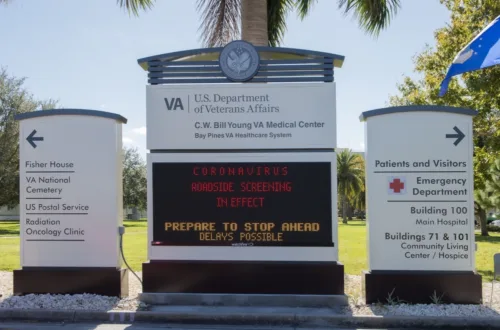VA Review Could Expand PACT Act Eligibility

The Department of Veterans Affairs is performing a review of certain medical conditions to learn if there’s a relationship between them and military duty in areas listed in PACT Act legislation, such as Iraq and Afghanistan.
When the PACT Act was passed, that law expanded VA benefits for Veterans exposed to burn pits, Agent Orange, and toxic substances. The Act expanded a VA list of conditions assumed to be caused by toxic exposures.
PACT Act Study: Who is Affected?
When the Department of Veterans Affairs announced its initial list of PACT Act upgrades to veteran benefits, it included the following. According to VA.gov, the Act:
- Expands eligibility for VA health care for veterans with toxic exposures
- Expands eligibility for veterans of the Vietnam, Gulf War, and Post-9/11 eras
- Adds presumptive conditions for burn pits, Agent Orange, and other toxic exposures
- Adds presumptive-exposure locations for Agent Orange and radiation
- Requires VA to provide a toxic exposure screening to every veteran in the system
That was the initial announcement. The new VA study researches the following medical issues as possible candidates to be added to the list of medical issues presumed to have a military service connection:
- Acute leukemias
- Chronic leukemias
- Multiple myeloma outside of the head and neck
VA.gov states, “Cancers of the head and neck are already considered presumptive under the PACT Act, so this research will focus solely on acute leukemias, chronic leukemias, and multiple myeloma originating outside of the head and neck.”
Related: Veteran and Retiree Military Benefits
While these conditions are not considered presumptive (meaning the VA automatically assumes they are duty-related), they may qualify for VA compensation outside PACT Act reforms.
The list above is also enhanced by a list of duty areas that could be expanded to include presumptive conditions from the following regions where toxic exposures may have occurred:
- Afghanistan
- Somalia
- Djibouti
- Egypt
- Jordan
- Lebanon
- Syria
- Yemen
- Uzbekistan
- The entire Southwest Asia theater
Goals of the VA Study
According to VA.gov, the study is meant to help the VA decide whether to add such conditions to the list of “presumptive conditions for Veterans.”
When the VA places a medical condition in this category, qualifying veterans “do not need to prove that their service caused their disease to receive benefits for it; instead, VA automatically assumes service-connection for the disease and provides benefits accordingly.”
Reasons for the Expanded VA Study
The VA is conducting the study to offer more comprehensive benefits for toxic exposures to veterans and their families. It’s part of the federal government’s push to offer better care to those eligible for VA benefits.
What to Know About Toxic Exposures And VA Claims
Just because the PACT Act doesn’t mention a specific medical condition doesn’t mean that the condition won’t qualify for VA compensation. When you apply for VA benefits, your application is reviewed on a case-by-case basis.
There is no one-size-fits-all approach to your claim. VA literature suggests that more than $1.5 billion in benefits have been paid out since the passage of the PACT Act.
Related: VA Home Loan Guide
About the author
Editor-in-Chief Joe Wallace is a 13-year veteran of the United States Air Force and a former reporter/editor for Air Force Television News and the Pentagon Channel. His freelance work includes contract work for Motorola, VALoans.com, and Credit Karma. He is co-founder of Dim Art House in Springfield, Illinois, and spends his non-writing time as an abstract painter, independent publisher, and occasional filmmaker.


